Henry Box Brown Plaza
Introduction
Text-to-speech Audio
The second stop on the Henry Brown path to freedom tour brings us to the waterfront in Richmond, Virginia. Richmond’s ports are steeped with African American history, as many enslaved African Americans entered the city aboard ships while free and enslaved persons worked on the river or canals, as well as the neighboring iron works and tobacco houses. The docks were initial arrival points for slaves before they were held in nearby slave pens and jails and sold at nearby auction houses. One of the most recent monumental spaces built in Richmond, the Box Brown Plaza commemorates the efforts of Henry Brown to achieve freedom. Brown became one of the most famous slaves in Richmond’s history after he escaped his master in Virginia, boxed himself inside a crate, and paid to have the crate shipped from Virginia to Philadelphia while he was inside. The Plaza includes a memorial for Brown: a metal duplicate of the box in which he was shipped stands as a testament to the bravery it took to pursue freedom.
Images
Visitors to the monument can imagine what Brown's journey might have entailed as he stayed in a box this size for 27 hours while he awaited his fate.
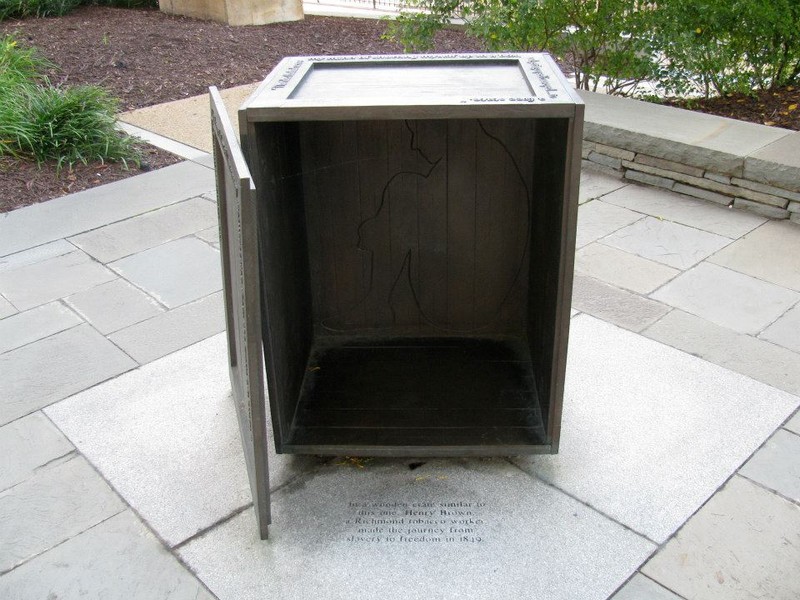
Henry Box Brown Plaza
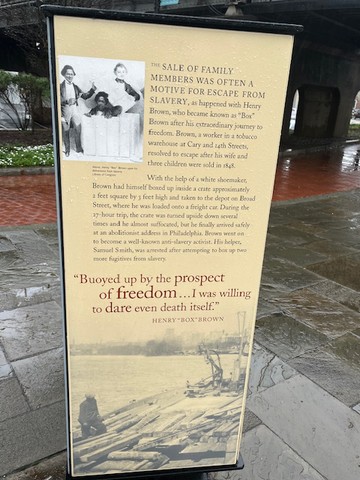
African American History and Dock of Richmond
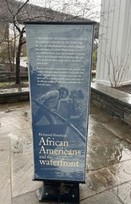
African Americans and Richmond Waterfront
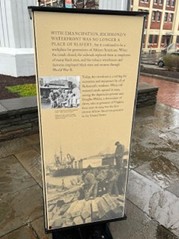
Box Monument Demonstrates How Henry Box Brown Fit Inside the Crate.
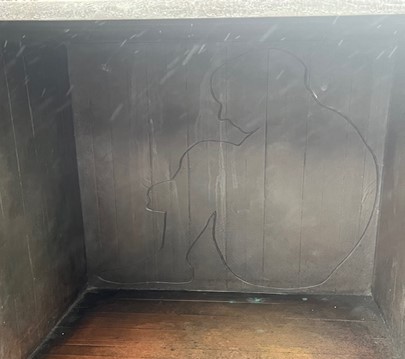
Backstory and Context
Text-to-speech Audio
Henry “Box” Brown was one of many slaves who sought freedom in the North. His wife, Nancy, was owned by a different slave master, along with their children. Nancy and the children were sold to a different plantation in North Carolina. Overcome with grief, Henry Brown decided to seek liberation from slavery. Henry enlisted the help of Samuel Alexander Smith, a white sympathizer, who in turn sought help with James Miller McKim (and William Still). McKim was a white abolitionist and member of the Philadelphia Anti-Slavery Society. McKim was a white abolitionist and member of the Philadelphia Anti-Slavery Society. Samuel Alexander Smith assisted Henry Brown in mailing himself to the Philadelphia Anti-Slavery Society. After a very rough 27 hours, Brown arrived and met up with James Miller McKim, William Still, Professor C.D. Cleveland, and Lewis Thompson. Upon opening of the box, he greeted the men saying, “how do you do, gentlemen?” He then proceeded to recite a psalm. The men coined him “Box” Brown.
This waterfront area of the City of Richmond had been a colonial trading post and free and enslaved African Americans lived and worked in this area. The plaza is located along the Richmond Canal Walk and on the historic docks that served as an arrival point for slaves prior to being held in nearby slave pens, jails, and auction houses. Many of these men also worked on boats along the James River carrying tobacco and other supplies to and from Richmond. The James River has many rapids, and this work was considered dangerous. The workers required a great deal of skill to navigate the waters. This plaza is dedicated to Henry "Box" Brown. It is located around the corner from the tobacco factory where Henry Brown worked. This warehouse was located at the corners of 14th and Main Streets. It was during his time working at the factory when Henry had married a fellow slave, Nancy, with whom he had three children. They rented a home in Richmond. For a period of time Brown had been paying his master not to sell his family. However, he was betrayed, and his wife (pregnant at the time) and all 3 children were sold to a different slave owner in North Carolina. Brown had made many attempts to reunite his family, without success. Now at the age of 33, angered and fed up with his situation, Brown purposefully burned his hand at work with sulfuric acid to get three days off of work as part of his plan to escape by getting into a shipping crate that was three feet by two. As McKim described it later, Brown 'placed himself in it in a sitting posture, his back shoulder & head resting against one end & his feet braced against the other.' James C.A. Smith and Samuel Smith nailed the lid on the box and wrapped it with five hoops of hickory wood." A memorial metal life size replica of the box is located at Box Brown Plaza, honoring the brave journey that Henry Brown made to freedom.
Sources
"Box Brown Plaza," Riverfront Historic Canal Cruises, last updated Jan. 10, 2013,http://www.rvariverfront.com/monuments/boxbrown.html
Henry "Box" Brown, PBS, accessed July 29, 2017, http://www.pbs.org/Black-culture/shows/list/underground-railroad/stories-freedom/henry-box-brown/
The Journey of Henry “Box” Brown Teachers Guide https://housedivided.dickinson.edu
Still, William. The Underground Railroad: Authentic Narratives and First-Hand Accounts. Garden City, New York. Dover Publications, 2007.
Meredith Rogan
Meredith Rogan
Meredith Rogan
